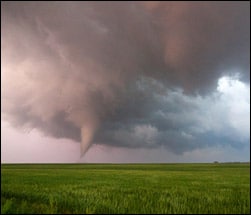
-
Find the right food for your petTake this quiz to see which food may be the best for your furry friend.Find the right food for your petTake this quiz to see which food may be the best for your furry friend.Featured products
 Adult Large Breed Chicken & Barley Recipe Dog Food
Adult Large Breed Chicken & Barley Recipe Dog FoodSupports healthy joints, lean muscle, and beautiful coat for large breed dogs
Shop Now Hill's Science Diet Adult Chicken & Beef Entrée Dog Food
Hill's Science Diet Adult Chicken & Beef Entrée Dog FoodChicken & Beef Entrée in a delicious loaf with complete & balanced nutrition to help keep adult dogs active and healthy
Shop Now Adult Chicken & Barley Recipe Dog Food
Adult Chicken & Barley Recipe Dog FoodSupports lean muscle and beautiful coat for adult dogs
Shop NowFeatured products Adult Tender No Corn, Wheat, Soy Chicken & Vegetables Stew Cat FoodShop Now
Adult Tender No Corn, Wheat, Soy Chicken & Vegetables Stew Cat FoodShop Now Adult Turkey & Liver Entrée Cat Food
Adult Turkey & Liver Entrée Cat FoodPrecisely balanced nutrition with the delicious taste of minced turkey & liver to help fuel the energy needs of cats during the prime of their life
Shop Now Senior Vitality Adult 7+ Tuna & Vegetables Stew
Senior Vitality Adult 7+ Tuna & Vegetables StewImproves Everyday Ability to Get Up & Go
Shop Now -
Dog
- Dog Tips & Articles
-
Health Category
- Weight
- Food & Environmental Sensitivities
- Urinary
- Digestive
- Joint
- Kidney
-
Life Stage
- Puppy Nutrition
- Adult Nutrition
- Senior Nutrition
Cat- Cat Tips & Articles
-
Health Category
- Weight
- Skin & Food Sensitivities
- Urinary
- Digestive
- Kidney
-
Life Stage
- Kitten Nutrition
- Adult Nutrition
Featured articles How to Properly Mix Wet & Dry Pet Foods
How to Properly Mix Wet & Dry Pet FoodsAn Orange cat eating from a bowl filled with mixed food
Read More What Is Littermate Syndrome? Pet Adoption Guide
What Is Littermate Syndrome? Pet Adoption GuideLearn more about littermate syndrome in dogs and cats and how to successfully navigate adoption and early socialization processes.
Read More The Science Behind Our Love for Pets
The Science Behind Our Love for PetsLearn the scientific reasons why we have such strong connections with our pets, and what science says about the love between humans and our furry friends.
Read More -


Natural disasters, like hurricanes and tornadoes, can strike at any time that's why it's critical to be prepared. These 8 simple, yet important steps will help you in the event of an emergency or if you need to evacuate your home with your cat or dog.
 Ensure your pet can be identified by either a microchip or collar ID tag, with updated contact information.
Ensure your pet can be identified by either a microchip or collar ID tag, with updated contact information. - Prepare an emergency box of supplies that is readily available. Emergency kits should include:
- Good, current photo ID of your cat or dog
- First aid supplies & guide book
- 3-day supply of cat or dog food in a waterproof container (be sure to replace food supply to assure it's fresh)
- Bottled water
- 2 bowls for pet food and water
- Safety harness and/or leash
- Waste clean-up supplies
- Medications and medical records (vaccination records)
- Contact list / information of veterinarian and pet care organizations
- Contact information for you (name, phone, address)
- Keep your emergency kit in an area that is easy to access in an emergency, such as a closet by the front door.
- Display a pet rescue decal on your front door or window to let first responders know there is a cat or dog in the house. Include your veterinarian's contact information, as well as your own.
- If you need to evacuate, consider taking a pet carrier or crate for transporting your pet and keeping them safe.
- Carry a recent picture of your cat or dog with you in case you are separated.
- Learn where your pet likes to hide in your house because pets may hide if they are scared. Finding them quickly will help you evacuate faster.
- Identify a location that is pet friendly if you need to leave your immediate area. Keep in mind that disaster shelters for people ,may not be able to shelter cats or dogs. It's a good idea to research hotels/motels with pet friendly policies, or ask relatives or friends if you and/or your cat or dog can stay with them
We care about the stress disaster survivors feel when their pets are missing, or when they are struggling to care for them while food and shelter are scarce. To help alleviate some of that stress, Hill's has established a National Disaster Relief Network to help during emergencies. This Disaster Relief Network includes nearly 100 shelters across the U.S. to distribute pet food supplies to those who need it most.


Tasty Tips
Young pets may need several visits in their first year for vaccinations. Adult pets generally benefit from annual check-ups, while senior or special-needs pets might require more frequent visits.
While natural disasters can strike at any time, according to the Weather Channel, there are official times that they can occur:
| Hurricane | Tornado | Wild Fires (ie California) |
|---|---|---|
| Hurricanes can form from early May to December in the Caribbean Sea or the Gulf of Mexico. Atlantic hurricane official season is June 1st - November 30th. Eastern North Pacific hurricane official season is May 15th - November 30th. | Tornadoes can occur at any time of the year and anywhere in the world In the SE states, peak tornado season is February – April Northern Plains peak season is June – August South – late winter - early spring Plains, Midwest & Ohio Valley – early spring - summer | While there is no official "Fire Season", it can be considered all year long, especially for California. however the key months are June - August |
By implementing these simple steps, you will be prepared should you and your pets need to react to a disaster.
Related products

Chicken & Beef Entrée in a delicious loaf with complete & balanced nutrition to help keep adult dogs active and healthy

Supports healthy joints, lean muscle, and beautiful coat for large breed dogs

Chicken & Barley Entrée in a delicious loaf with great taste and precisely balanced nutrition to support 5 essential building blocks for lifelong health

Supports lean muscle and beautiful coat for adult dogs
Related articles

Learn more about littermate syndrome in dogs and cats and how to successfully navigate adoption and early socialization processes.

Understanding how to train puppies and kittens starts with understanding their differences. Discover tips for training success for puppies vs. kittens.

An Orange cat eating from a bowl filled with mixed food

Learn the scientific reasons why we have such strong connections with our pets, and what science says about the love between humans and our furry friends.

Put your pet on a diet without them knowing
Our low calorie formula helps you control your pet's weight. It's packed with high-quality protein for building lean muscles, and made with purposeful ingredients for a flavorful, nutritious meal. Clinically proven antioxidants, Vitamin C+E, help promote a healthy immune system.
Put your pet on a diet without them knowing
Our low calorie formula helps you control your pet's weight. It's packed with high-quality protein for building lean muscles, and made with purposeful ingredients for a flavorful, nutritious meal. Clinically proven antioxidants, Vitamin C+E, help promote a healthy immune system.


